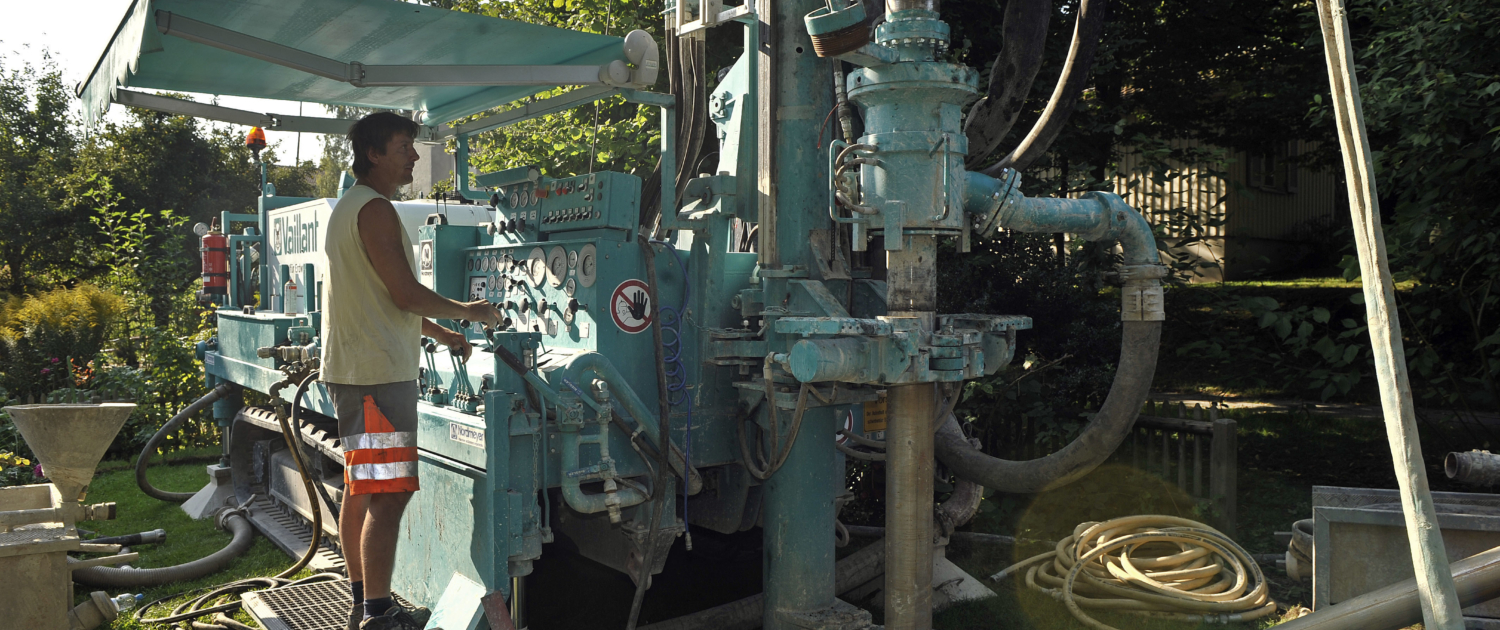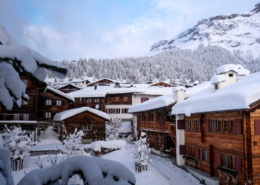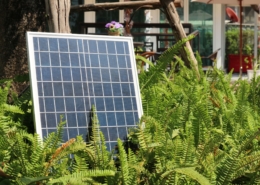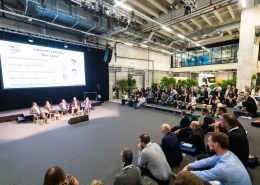Deep geothermal energy - an on-site energy solution
The current debates about the security of energy supply and climate protection make it clear: We need to rethink our energy mix. As a sustainable energy source, geothermal energy helps to meet future energy needs.
It is unmistakable: From Geneva to Basel and also in the cantons of Vaud and Jura, deep geothermal energy (from a depth of about 500 meters) is on the rise. An overview of geothermal projects can be found here. After some initial hesitation, Switzerland has set out to explore its deep subsurface and develop its geothermal potential. This major undertaking is not without risk, however, because our subsurface is an expensive black box whose exploration requires high initial investment. In addition, we do not have a decades-old oil and gas tradition and therefore have to build a powerful industry virtually from scratch. Nevertheless, deep geothermal energy is a convincing solution to meet the current energy and climate challenges.
News from across Europe - particularly the war in Ukraine and France's decision to restart its nuclear energy program - makes it clear that our energy system must become more resilient, flexible and reliable. We must secure energy supplies for the future and no longer avoid certain difficult issues. The solution is literally under our feet
A source of heat and electricity
The Swiss subsoil holds a huge natural reservoir of heat that is permanently and unrestrictedly available, regardless of climatic conditions. The geothermal resources of the near-surface subsurface are already being used on a large scale to supply heat to residential buildings: In Switzerland, geothermal probes with heat pumps currently supply more than 80 percent of the approximately 4 terawatt hours (TWh) of heat generated from geothermal energy.
This renewable energy can also be used in other areas - for example, for central heating and air-conditioning systems or to generate electricity if the heat source provides a temperature of more than about 110 degrees Celsius. It can also supply energy to industrial plants, city districts or even entire agglomerations. And it even helps us balance our energy system by providing valuable seasonal storage capacity. This means that surplus heat can be stored underground to be used when needed.
Our European neighbors have already implemented numerous projects that demonstrate the economic potential of "deep hydrothermal geothermal energy." Hydrothermal deep geothermal energy means the use of hot water sources that are naturally present in the permeable layers of the subsurface.
In France, there are around 55 hydrothermal projects in the greater Paris area, which have been supplying heat to almost one million people since the late 1970s. In Switzerland, there is only one comparable project in Riehen (BL), which has been supplying heat to almost 8000 inhabitants since 1994. In addition, unconventional systems can also be developed, such as stimulated geothermal systems or "closed loop" systems, which allow heat from underground to be used independently of the presence of geothermal waters.
So-called petrothermal deep geothermal energy is also promising. It generates electricity and heat by utilizing the heat in crystalline rock at great depths. In Finland, for example, drilling to a depth of 6.5 kilometers was carried out for the first time in 2021 near Helsinki.
The Swiss Federal Office of Energy (SFOE) estimates that harnessing energy from warm, dry bedrock will provide 2 terawatt-hours of geothermal electricity by mid-century. Technological advances are not only making it possible to tap ever deeper geothermal resources, but are also expanding the range of applications for geothermal energy.
Weighing interests
Deep geothermal energy has many advantages. It provides so-called band energy, which means it can be used continuously, since it depends only on the specific properties of the subsurface. Therefore, geothermal energy is at least partially an alternative to nuclear energy. Since geothermal energy production is flexible and can be ramped up in case of high daily or seasonal demand, it can help solve the winter supply problem and thus also reduce our dependence on gas. Moreover, the price of geothermal energy remains stable, in contrast to the chronic price volatility of fossil fuels, and it is not affected by climate fluctuations.
However, geothermal energy also stirs up environmental concerns, especially regarding the pollution of underground drinking water resources. In addition, stimulation and drilling activities are not without risk and can trigger earthquakes with damaging consequences, as observed in the Basel and St. Gallen projects. To mitigate these risks, best practices and standards, as established in the oil industry for decades in the areas of reservoir management and well integrity, can also be applied to geothermal exploitation. Geo Energie Suisse has set up an earthquake monitoring system as part of its deep geothermal pilot project at Haute-Sorne in the canton of Jura. This allows the operator to adjust operations to always remain below the lowest alert level and to react immediately in the event of an increase in seismic activity.
Geothermal energy and lithium production
New opportunities are already emerging to further enhance the economic attractiveness of deep geothermal energy. For example, an additional source of revenue for geothermal projects is the "cascade use" of heat: first, electricity is generated, then, as the temperature drops, heat that can be used to supply hot water to homes, greenhouses, or fish farms. Some geothermal waters also contain economically and strategically important metals, such as geothermal lithium, which is used in the production of car batteries and can promote the transition to electric mobility.
And technology and knowledge transfer can also accelerate the use of geothermal energy and significantly reduce the associated investment costs. In Switzerland, there is an institutionalized exchange between geothermal stakeholders, such as the "Transfer" program launched by the umbrella organization Geothermal Switzerland for the exchange of knowledge and technology. On a global level, the oil industry is getting into geological storage of carbon dioxide, but is not yet ready for further diversification, even though it has all the expertise in this field. To initiate change, it probably needs clearer signals from current events.
Untapped potential
In Switzerland, near-surface geothermal energy with heat pumps is still the most common method of exploiting geothermal resources. The investments required for projects to explore the deeper subsurface are still considered too high. However, such investments, especially in the case of unconventional geothermal projects, make it possible to prove the feasibility of this promising technology. For this reason, the federal government will continue to support geothermal energy, like other renewable energies, so that new technical advances and economies of scale can be achieved. It is creating a suitable regulatory environment for geothermal energy and supporting the market, which is only just emerging in Switzerland. The numerous deep geothermal projects on the 2022 agenda show that government support is already bearing fruit.
The value of geothermal energy consists of much more than its economic competitiveness or itscarbon footprint. Its applications are wide-ranging, as is its potential for use. All that is needed now for this renewable energy to gain sustainable momentum in Switzerland is a success story.
Nicole Lupi, Geothermal Energy Specialist, Swiss Federal Office of Energy (SFOE)
The article first appeared in "Die Volkswirtschaft"/"La vie économique"
 keystone
keystone
 3 Vote(s), Durchschnitt: 4,33
3 Vote(s), Durchschnitt: 4,33 EnergieSchweizVerheizen Sie kein Geld mehr für Ihre Zweitwohnung
EnergieSchweizVerheizen Sie kein Geld mehr für Ihre Zweitwohnung  PEIK – Die professionelle Energieberatung für Ihr KMU
PEIK – Die professionelle Energieberatung für Ihr KMU  ©ShutterstockLiebes BFE… Was ist eine Plug-and-Play-Solaranlage?
©ShutterstockLiebes BFE… Was ist eine Plug-and-Play-Solaranlage?  Mobilitätsarena 2019: Der Elektromobilität gehört die Zukunft
Mobilitätsarena 2019: Der Elektromobilität gehört die Zukunft 
 © David Schweizer
© David Schweizer Coopérative Migros Lucerne
Coopérative Migros Lucerne
Neuste Kommentare